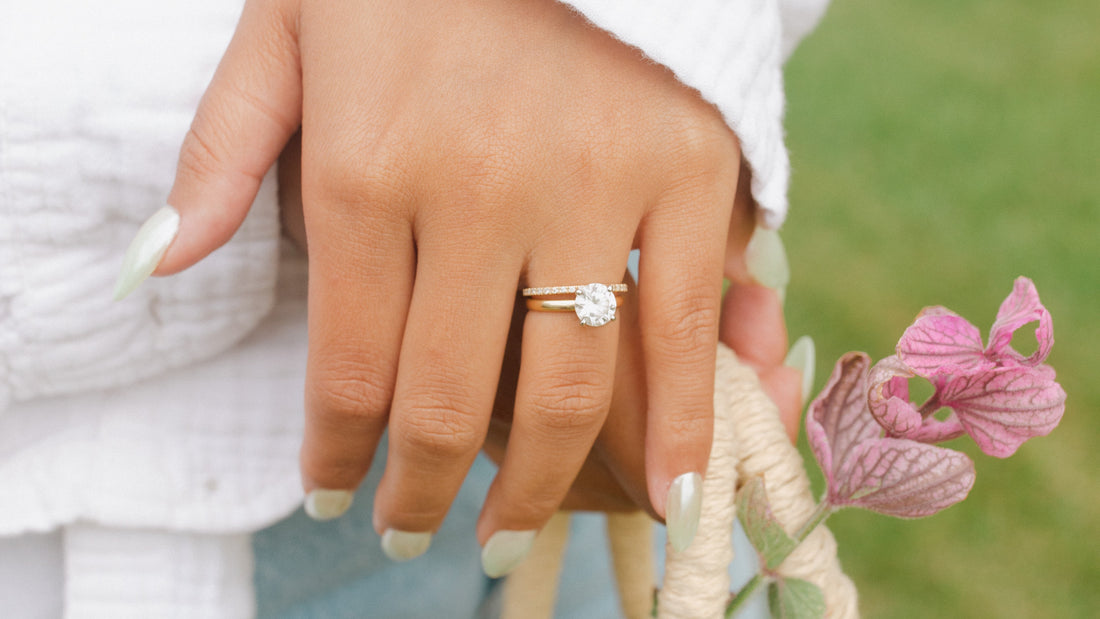

Choosing the right gemstone size for your ring is a blend of personal preference, practicality, and style considerations. Here’s a comprehensive guide to help you select the perfect gemstone size that complements your style and fits comfortably.
Consider Your Personal Style
- Aesthetic Preference: Think about the look you want. Do you prefer a statement piece with a large gemstone or a more understated, elegant design? Larger gemstones tend to be more eye-catching and bold, while smaller ones can be subtle and classic.
- Lifestyle: If you lead an active lifestyle or work with your hands frequently, a smaller, more durable gemstone might be more practical.

Understand Gemstone Sizes and Measurements
- Carat Weight vs Size: Gemstones have been traditionally measured by weight in carats (ct), where one carat equals 0.2 grams. The size of the gemstone, however, depends on both the carat weight and the type of gemstone, as different stones have different densities. For example, a one-carat sapphire is typically smaller than a one-carat diamond due to the density differences.
- Shape and Cut: The shape and cut of the gemstone affect how its size is perceived. For instance, a round brilliant cut might appear larger compared to a cushion cut of the same carat weight due to its different faceting.
- Dimensions vs Carat Weight: The overall size of a gemstone can be characterized by the face-up size of the gemstone which is the overall amount of space the gem will occupy on your finger. The proportions of the top (crown) and bottom (pavilion) of the gemstone cut will have an impact on the weight of the gemstone, but not the face-up size.
For Example: a rough sapphire with 6mm dimensions will typically weigh around 1ct. Although with alternative proportions the same 6mm sapphire can weigh between 0.75ct and 1.25ct but occupy the same amount of face up space on your finger.

Match the Gemstone to the Ring Design
- Band Style: Consider how the gemstone size will work with the band. A larger stone might require a sturdier band or additional support in settings to keep it secure.
- Setting Style: The setting can impact how the gemstone size looks. A halo setting, for example, can make the central stone appear larger, while a bezel setting provides a more understated look.

Consider Your Finger Size - Balance and Proportion
The size of the gemstone should be proportional to the size of your finger. Larger stones can be overwhelming on smaller fingers, while smaller stones might look lost on larger fingers. It’s about finding a balance that complements your hand.
Set a Budget
Gemstone prices can vary widely based on size, quality, and type. Establishing a budget helps narrow down your choices and ensures you find a gemstone that fits both your financial and aesthetic preferences.
Seek Professional Advice
Stag & Finch associates can offer personalized advice based on your preferences, hand size, and lifestyle. They can give you insight and guidance to help you select the right sized gem and the best settings and styles.
Conclusion
Choosing the right gemstone size for your ring involves balancing personal style, practical considerations, and budget. By considering factors such as your aesthetic preferences, lifestyle, finger size, and the gemstone's cut and shape, you can make an informed decision that ensures your ring is both beautiful and functional. Don’t hesitate to seek professional advice to ensure you find the perfect gemstone size that complements your unique style and needs.
